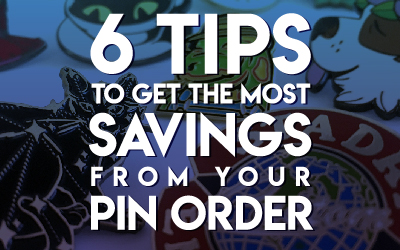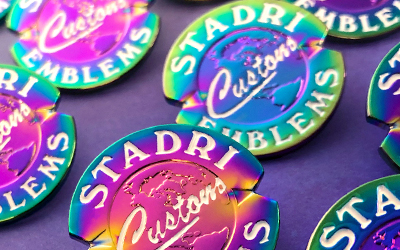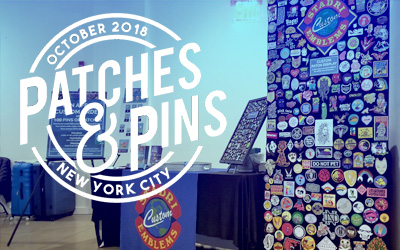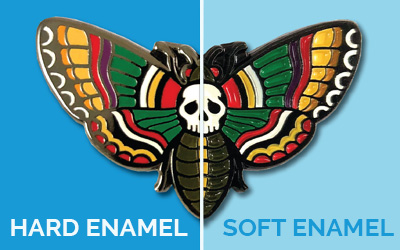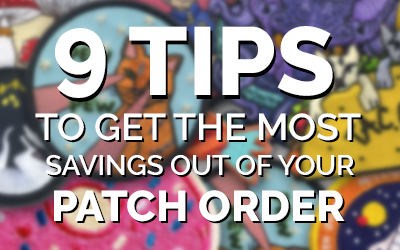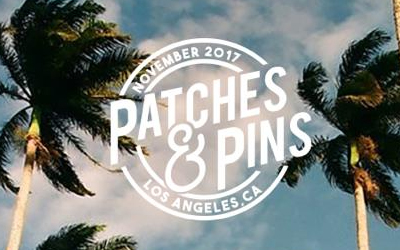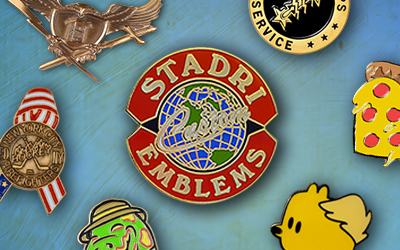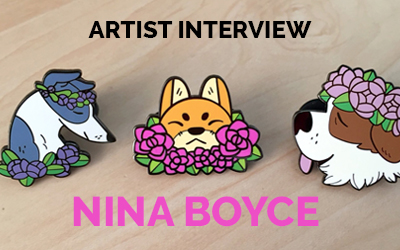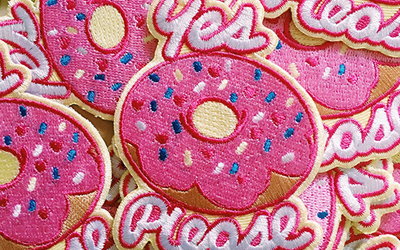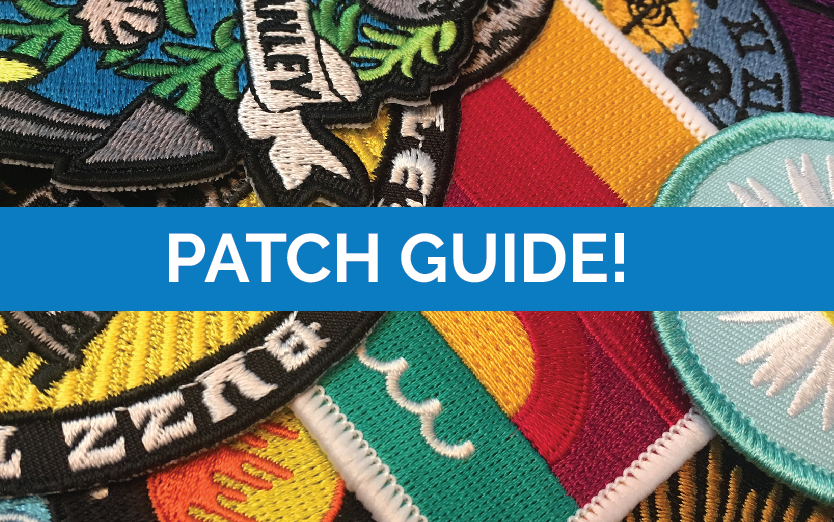Crowdfunding campaigns have been a very popular method for artists and designers to bring their enamel pin ideas to life. Searching for "Enamel Pin" on Kickstarter yields thousands of results If you have seen these projects being promoted on Instagram, or if you've helped fund one yourself, you may have also considered this route to fund your own project ideas.
With all of the work involved, it may seem intimidating to start a campaign. The truth is that it is a lot of work, but as long as you are prepared, it can be a really great experience. This post will help you understand what you will need for your campaign, and set you up for success.
Getting Started With Crowdfunding
If you’re not familiar with crowdfunding, here’s the general idea: You pitch a new idea that you need funding for, and people who believe in your idea pledge money to make it happen. After the project is funded, you reward your backers with the finished product. With crowdfunding, the website that you use will take a cut of your funding in exchange for their service. Currently, the most popular sites for crowdfunding are Kickstarter and Indiegogo.
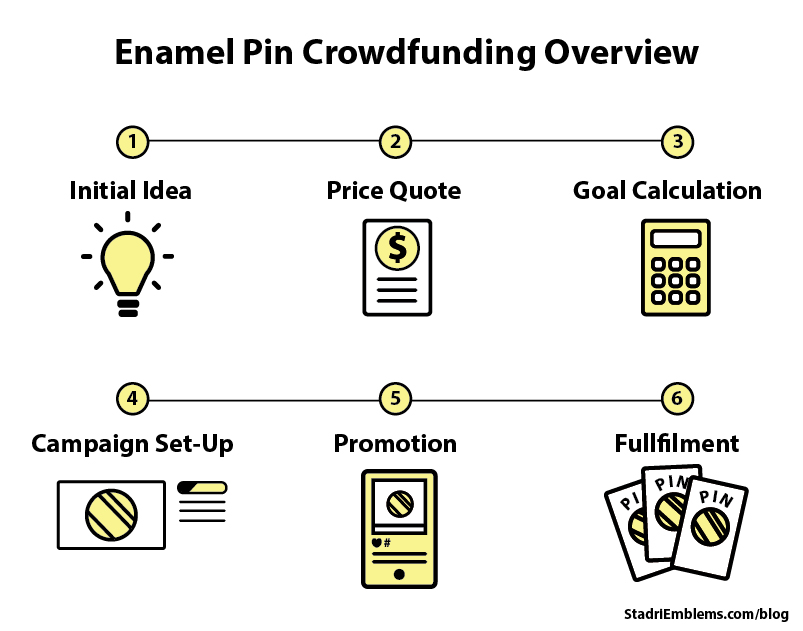
Each site has a set template for you fill out the required information and upload your own images. You are responsible for making it look enticing to potential backers, as well as promoting the campaign. With so many enamel pin campaigns out there, you need to make sure that yours will catch someone's eye.
Should You Try Crowdfunding?
Crowdfunding a project has two obvious benefits:- You'll be covered for the cost of the pins you want to make.
- You have a chance to drum up interest in your product before actually producing it.
Creating a crowdfunding campaign creates a sense of hype and excitement for what you want to make. If you are just starting out making enamel pins, this can help your brand grow. If your campaign doesn't end up getting fully funded, there are no fees or consequences. With enamel pin Kickstarters, there is little to no financial risk involved. When you use Stadri Emblems to produce your products, we won't expect payment until your campaign has ended and your funds have been released to you. If you decide not to get your pins made due to an unsuccessful campaign, we will not expect payment at all. Getting a price quote is completely free.
Careful Preparation is Key.
The first thing you should prepare is the artwork for your pin. Presentation is very important with crowdfunding. You're going have to create interesting and accurate preview images to entice potential backers into pledging for your campaign. You can go the extra mile and create graphics to put into your description as well.
Your main project cover photo is the most important image you need to create. This is the image potential backers will see first when browsing the site.
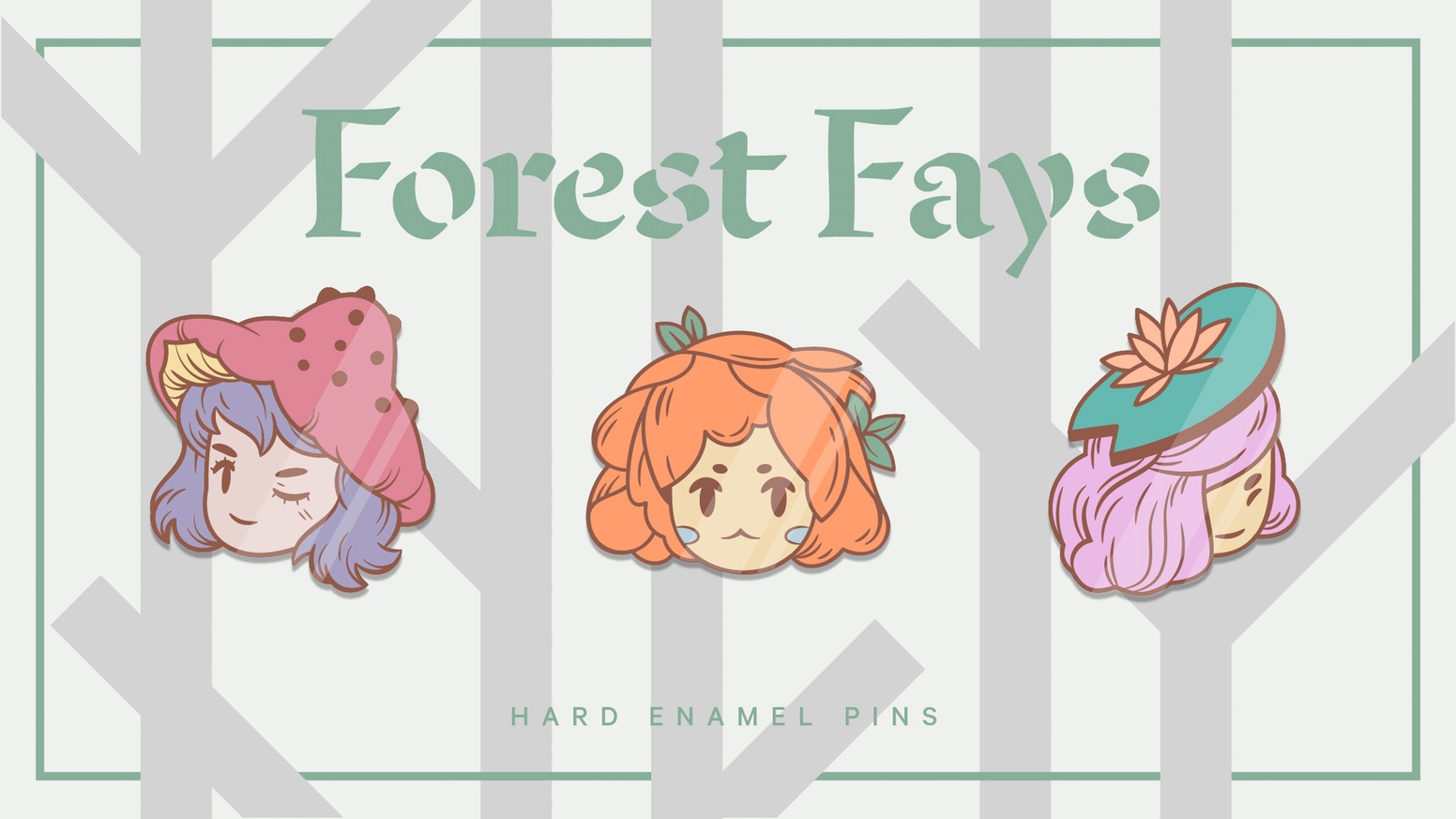
Alex Nash ran a Kickstarter for their collection Forest Fay pins. You can see the full campaign here.
It's imperative to make sure that the pin design you are pitching is actually going to be a possible to produce. Pin-making can be a complex process, and there are a lot of production techniques that just don't mix. For example, did you know that you can paint the metal of a pin any color you'd like, but only with soft enamel pins? If you want to read more about the different pin-making techniques before you start designing, check out our post: Guide to Creating Your First Enamel Pin.
In addition to incompatible production processes, some processes and special options—such as rainbow plating and glitter—can increase the cost of your pins. It is highly recommended that you get a price quote before launching your campaign. It's completely free, and will save you many potential headaches.When setting up your campaign, you'll be expected to give an approximate time for the delivery of your pins or patches to your backers. For pins, our production time is 3-5 weeks from the time your approve your pre-production sample. After you receive your items, you'll have to individually package them to mail to your backers, which can be time-consuming. Always make sure to give yourself a little extra delivery time to be safe. Always be honest and upfront with your backers.
Calculating Your Goal Amount
This is one of the most important elements of setting up your campaign. If you are using Kickstarter, you will not get any of the pledge money if you fail to meet your minimum goal amount. You're going to want to make your goal as low as reasonably possible to ensure the highest chances of getting funded. Even if you're $1 short of your goal, your campaign will fail!
To start off, we need the cost of producing your pins. We can get you a price quote right through our website. We can produce as few as 25 pins per design, but we can always adjust your quote to whatever amount you end up needing at the end of your campaign. You can also send us an email if you'd like to ask additional questions.
Let’s use an example of a 1" hard enamel pin. If you wanted to get 50 pins that are 1" high, then your production cost would be $164.50 from Stadri Emblems. This is your starting point for calculating your total goal.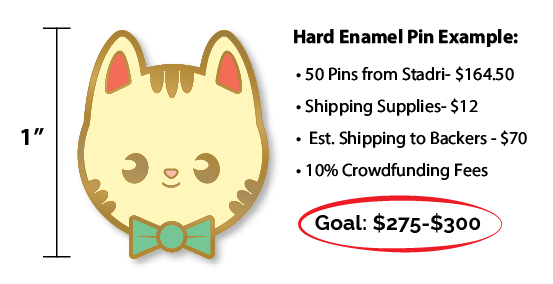
The next thing to consider is what packaging you will use to ship your pins. This cost usually isn't significant with smaller campaigns, but you still want to factor it into your total. Pins can easily be mailed in a small padded envelope, and they only weigh a few ounces. You can purchase them in bulk online to save yourself a little money.
Finally, factor in the fees from your crowdfunding service, as well as taxes. The crowdfunding sites will want a cut of your pledges for processing fees. Kickstarter provides a calculator that will show you how much you will be taken from your total in fees. You can take a look at their policies here.
Yes, you also have to pay taxes too! But not right away. You are required to report your earnings on your yearly taxes. For smaller campaigns, it won't be a significant amount, but be prepared to pay the taxes on what you earn once tax season comes around. Read more about the taxes associated with a Kickstarter campaign here.
Consider Using Stretch Goals.
Many pin and patch crowdfunding campaigns will have what is called "stretch goals" for different color versions or designs. The idea is that you make the goal amount to cover only 1 of your designs, and if you surpass your goal by another set amount, the other designs are made available to your backers. That way, if you don't get funding for all of your designs, you might still reach the smaller goal for only 1 or 2 designs and be able to at least make those pins. Stretch goals also act as an extra incentive for people to back for campaign, and for current backers to increase their pledges to help unlock the goals.
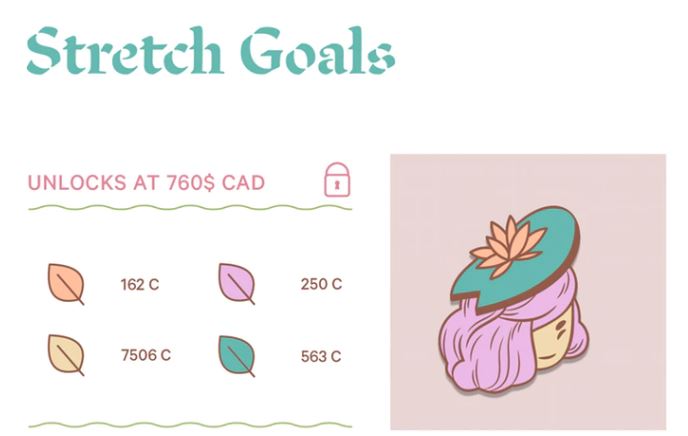
Alex Nash's Forest Fays enamel pin campaign had two stretch goals for different pins. You can see the full campaign here.
Do NOT Forget About Shipping Costs!
Remember that shipping should be included in your goal amount. When someone pledges for a $10 pin reward, they are actually pledging $10 plus the shipping you charged them. You don't want to be left short-changed when you spend hundreds of dollars shipping out rewards that you didn't account for. For example, if your production cost is $200 for pins, your goal amount should not be just $200. You will be left to pay the shipping out of your own pocket after you've paid for your pins to be produced. When setting up your project rewards, there will be an option to charge an additional amount for shipping.
So, just how much do you add on for shipping in your goal? We will give you a simple example that you can apply to your own campaign, but we can't advise you on exactly how much your goal should be. After you calculate how many backers you need to cover your production costs, you can use that to determine the total cost of shipping your pins to your backers.
Let's say that your production costs are $200 total and backers need to pledge $10 to get 1 pin. You'd have to get 20 backers to pledge $10 in order to cover that cost. If they are all in the US, your shipping cost for 20 small packages would be about $70, assuming the the average cost per package is $3.50 each. Knowing that it will cost you at least $70 in shipping, your goal amount should be at least $270. That should give you an estimate of how much money you'd need to at least produce the pins or patches AND ship them out.
There is no way to predict how many backers will be international customers, or how many will pledge for 2 or more items. The cost for shipping will always be a rough estimate, but it's important to dedicate a portion of your goal to it.
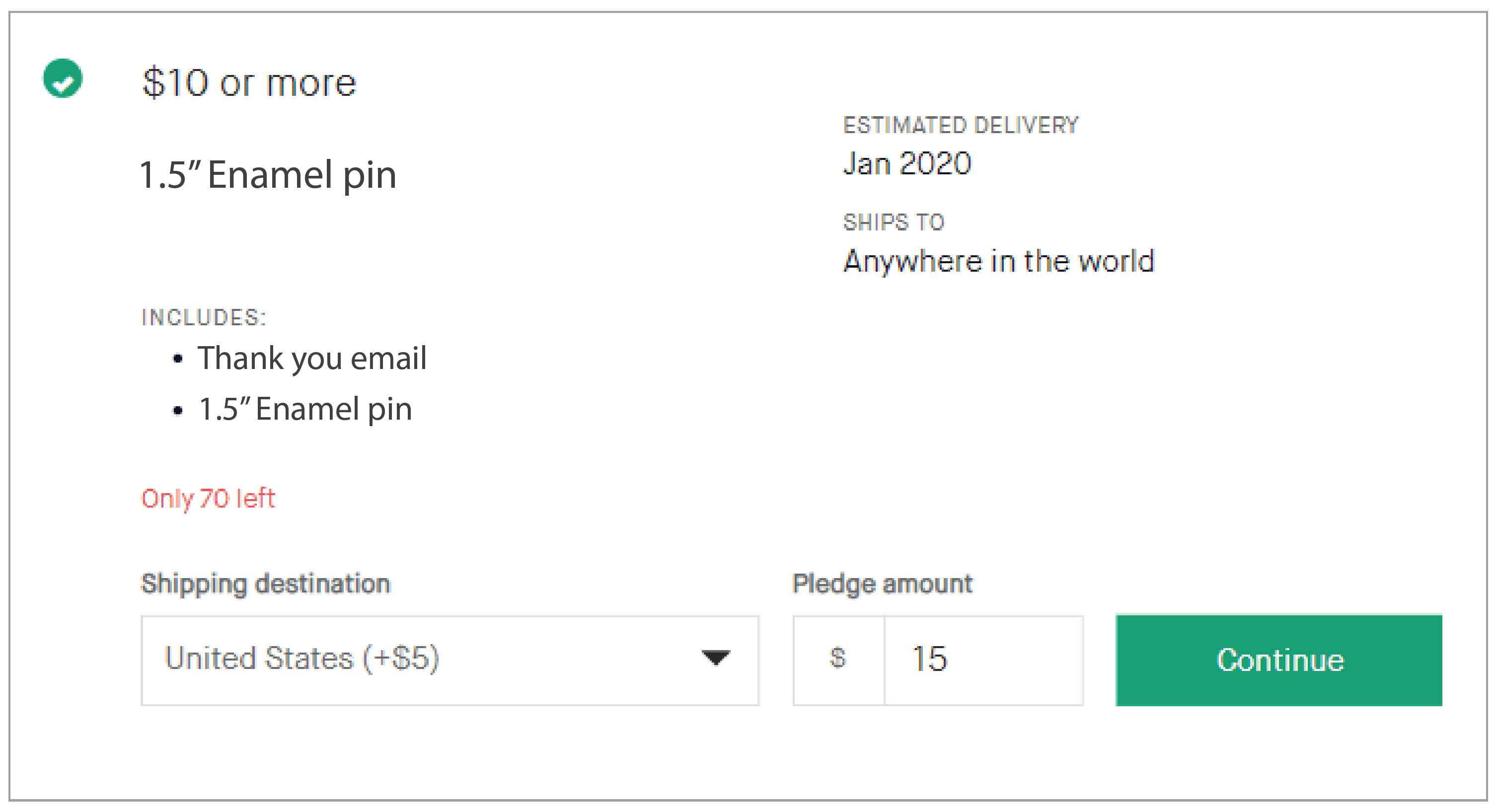
When someone pledges for a pin, their total pledge will be for the pin, plus for the shipping amount that you set.
Most shipping services calculate cost by weight. The weight of an average pin or patch is only a few ounces. If you are shipping domestically in the United States and through the US Postal Service, you can expect shipping to be about $2.75-$3.50 for a single pin in a padded envelope with tracking. That being said, you might want to round up and require $5 for shipping in order to cover the cost of your envelopes and other materials.Shipping internationally is also an option. You don’t have to offer shipping outside of your country if you do not want to. If you do, make sure you are charging enough! This is a pitfall that unfortunately many people fall into. On Indiegogo and Kickstarter, you can charge different shipping prices per country. Calculating shipping for several different countries and entering the amount can be tedious, but it’s better than being caught off guard with a huge shipping charge that negates your profits, or causes you to lose money. To calculate shipping, you could use the US Postal Service’s online shipping calculator to get a general idea of the costs and what you should charge. Typically, shipping something small and light-weight from the US will be around $13-$15.
Setting Up Rewards
Now that you have a goal amount, it’s time to create some rewards! You should have a varied price range for your rewards to encourage people to back your project. Something small like a thank-you note is always a nice idea for a low-cost reward. This is great for people who want to contribute something to your project but may not have enough money for a higher reward option. Having an option for multiple pins or patches is also a good idea. You want to give your potential backers more than just one option. On average, people usually set their rewards to $10-$15 for one pin. Extra incentives to pledge more are common and a nice way to thank people, but they aren't required.
Enamel Pin Reward Ideas
- Limited amount of "early bird" pins at a slight discount
- 2 or more pins for a slight discount
- A bonus sticker of your design
- A small print or postcard of your design
- Handwritten thank-you note
Promoting Your Campaign
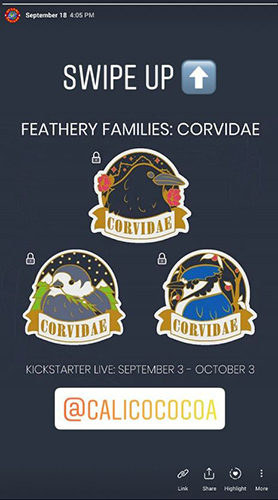
After your campaign is launched, it’s time to tackle one of the most difficult parts: self promotion. It’s up to you to make sure your campaign is a success. Some people will organically come across your campaign on Kickstarter, but sharing on social media is essential to the success of a campaign. However, you want to avoid looking like a spam bot. Sharing the same image or text over and over again will quickly become annoying to your followers. You're going to want to make your posts meaningful and interesting. For example, sharing that you have almost unlocked a stretch goal, showing sketches of your initial idea or behind-the-scenes content, or creating a video, are all ways to create content that your backers will want to share with their own followers.
Here's an example of an Instagram story we made to promote Calico Cocoa's Kickstarter campaign.
Don't forget to take advantage of Instagram, which has become the most popular platform for patch and pin makers and collectors. Make sure that when you using the most relevant hashtags as well. Tag your posts for the subject matter of your pins or patches, as well as popular tags such as #enamelpins, #pingame, and #flairgame. If your budget includes marketing, you can also experiment with promoting your posts. It's fairly easy to do on Instagram, and you can set your budget as low as $5 per day.
You could also make a posting schedule for yourself. Plan out ahead of time when and where you will post on social media. Posting every single day to your facebook friends won’t be as effective as nicely timed updates on a variety of platforms. Kickstarter has a great post on their blog for tips on how to share your project on social media effectively.
Why Choose Stadri Emblems To Produce Your Pins?
Our staff has had personal experience with crowdfunding their own designs, and we can pass our experiences on to you. We also are willing to be your first backer. Yup, we will even contribute a small amount to get your campaign started! We also like to share our customers' campaigns on social media to help get them fully funded. If you are using our services to create your pins for Kickstarter, let us know before you get started! We typically promote our customers' campaigns once a week on Instagram and twitter. We want to see your project meet its goal too!
Promotion of your designs on our profiles is at our own discretion. We won't promote campaigns that infringe on copyrights, are religious themed, promote violence or hatred, are politically themed, pornographic, or contain other sensitive materials.
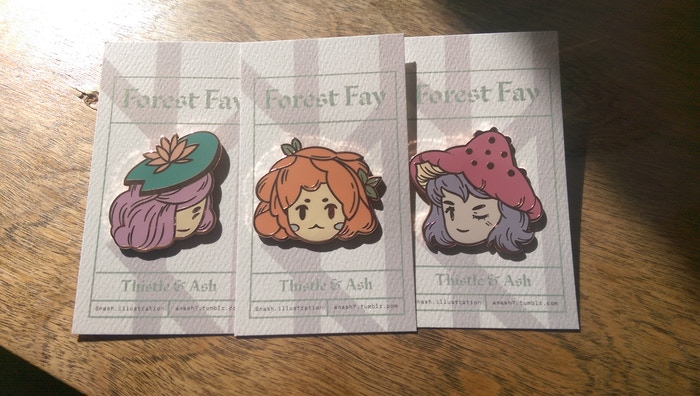
Alex Nash's successful Kickstarter pin results. You can pick them up in their shop here.
We are very proud to provide high-quality pins and patches to artists and designers. If you want to take the plunge into crowdfunding, we will have your back through the entire process.

